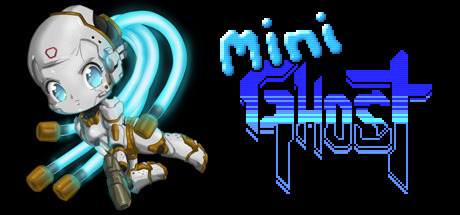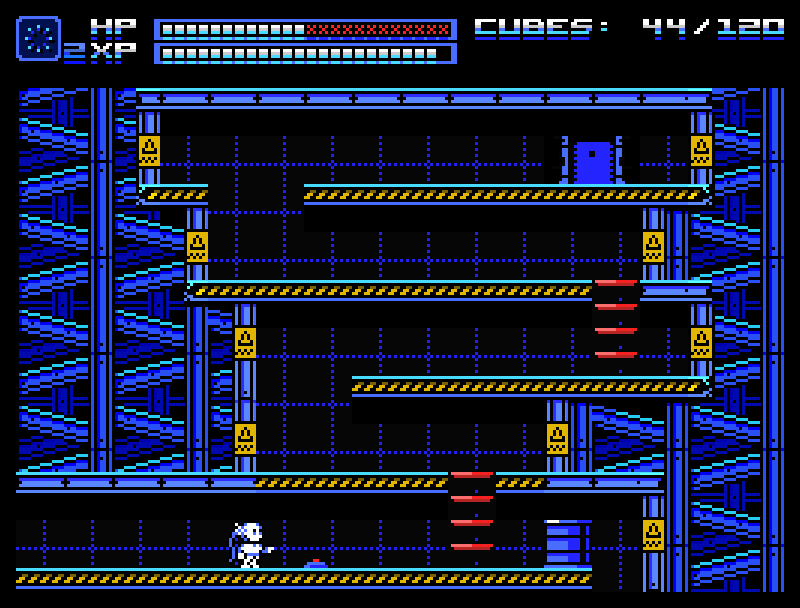Indie Game of the Week 182: Mini Ghost
By Mento 0 Comments

It's been almost two weeks, let's talk about explormers again. Mini Ghost comes to us courtesy of Barcelonan developer Francisco "franfistro" Téllez de Meneses, whom I last encountered with 2012's UnEpic. Franfistro developed Mini Ghost to be the Bloodstained: Curse of the Moon to Ghost 1.0's Bloodstained: Ritual of the Night. To clarify: Mini Ghost is an 8-bit, bite-sized aperitif to the much more graphically and mechanically elaborate Ghost 1.0, though in this case it was made afterwards as a cheap little quickie prequel to maybe inspire audiences to check out the main course.
Mini Ghost is a little on the primitive side as a result, though that's not to say it doesn't have much to offer in terms of innovation and fresh takes on the explormer genre, which has become so thoroughly, well, explored by this point. A mostly linear central map, which creates a big circle for players to move around, branches off into four smaller areas which represent the core progression areas: each has a boss that drops the keycard to the next. Most of the items you find are incidental: they're in the same random crates that more often drop energy cubes (currency) or nothing at all, though you can usually tell if there's something useful in one by how difficult it is to reach. Cubes, meanwhile, can buy a lot of gear from store, but a lot of this gear simply increases your currency limit - the best item in the game, the Twin Shot (which doubles your firepower), requires 200 of these energy cubes, which requires you buy every cube capacity upgrade first (the default is 40). Beyond that, the gameplay is chiefly gun-based, as you shoot enemies that adopt any number of behavior patterns from wasps that fly in close to trap-like turrets that pop out of the floor to spiders that hop between floors to ambush you. As well as your core weapon, you'll also be able to pick up and stack (up to three) special sub-weapons which are best saved for bosses.

Beyond that core gameplay loop, which is solid enough, there's several things I both like and dislike about Mini Ghost's particular structure and presentation. I like the map system and how forthright it is about barriers you can't surpass yet. I dislike how there's almost no fast travel, and on a linear map that means having to take the same journey a few times as you'll need to backtrack occasionally to the start. I like that the "experience" system boils down to a small heal whenever you fill the bar, which leads to a neat little risk vs. reward system: when low on health, do you attack enemies more to fill the bar faster, or do try to stay out of their way in case you take even more damage? I dislike the achievements, which are mostly "don't play the game this way" or "don't take damage to this boss" and are therefore highly restrictive and easy to fail forever. I like that there was a surprisingly wide amount of variation with enemy types and their behavior. I dislike how there's no way to regain health besides filling the XP bar for a single point (initially, at least) unless you warp back to the start where there's a robodoctor.
Fair to say I was ambivalent about Mini Ghost for the most part, though I can't really say I didn't enjoy it overall. The gunplay and platforming recall the 8-bit era's purity, where it was more about getting some very basic controls feeling as right as possible than it was about giving you all manner of alternative modes or largely superfluous RPG progression mechanics to play around with. It has me curious enough to check out Ghost 1.0 one of these days, though I was probably going to play that anyway considering it's an Indie explormer and I have hell of impulse control problems.
Rating: 3 out of 5.
| < Back to 181: The Lost Art of Innkeeping | The First 100 | > Forward to 183: Forever Lost: Episode 1 |
